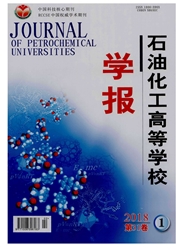

 中文摘要:
中文摘要:
普通污水配制的聚合物溶液因为粘度损失,导致采油效率不高,因此必须使用自来水或更高级别的洁净水,导致耗水量大。对利用曝氧污水配制HPAM溶液及ASP复合体系进行了研究,探讨了所配制溶液的热稳定性并系统地考察了剪切、硫酸盐还原菌(SRB)、碱以及粘度稳定剂等对溶液粘度的影响。结果表明,剪切降解是溶液粘度损失的主要因素,污水曝氧可以在很大程度上降低细菌对粘度的伤害。对于HPAM溶液,添加粘度稳定剂后,无论是否剪切,老化30d后其粘度保留率都比未加稳定剂时高。对于ASP复合体系,碱和粘度稳定剂对粘度有很好的保护作用,粘度经过30d老化后基本没有损失。
 英文摘要:
英文摘要:
Because of the low viscosity of the solution prepared by common produced water,the oil recovery was not high. Therefore,the solution has to be prepared with tap water or other water of high quality,which leads to high consumption of fresh water. Produced water after aeration was used to prepare hydrolyzed polyacrylamide (HPAM) or alkaline-surfactant-polymer (ASP) solution. The thermal stability of the prepared solutions was investigated. The influences of shear,sulfate-reducing bacteria (SRB),the alkali and the viscosity stabilizer on the solution viscosity were also investigated. The experiment results show that shear degradation is the major factor in viscosity loss of the solutions and the aeration had good effect to reduce the viscosity loss caused by SRB. The experiment results also show that the HPAM solution has a better capability to keep viscosity in the presence of viscosity stabilizer when it is subjected to 30-day aging,and so do the ASP solution when alkali and viscosity stabilizer are present.
 同期刊论文项目
同期刊论文项目
 同项目期刊论文
同项目期刊论文
 期刊信息
期刊信息
